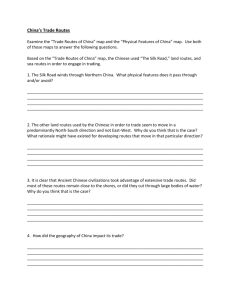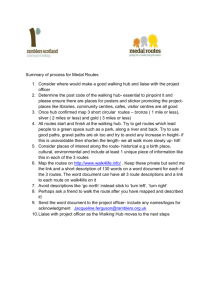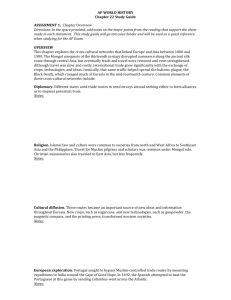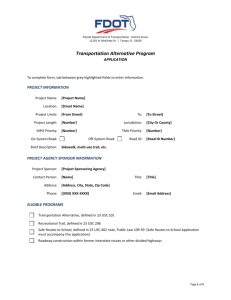Campus Map Layers
advertisement
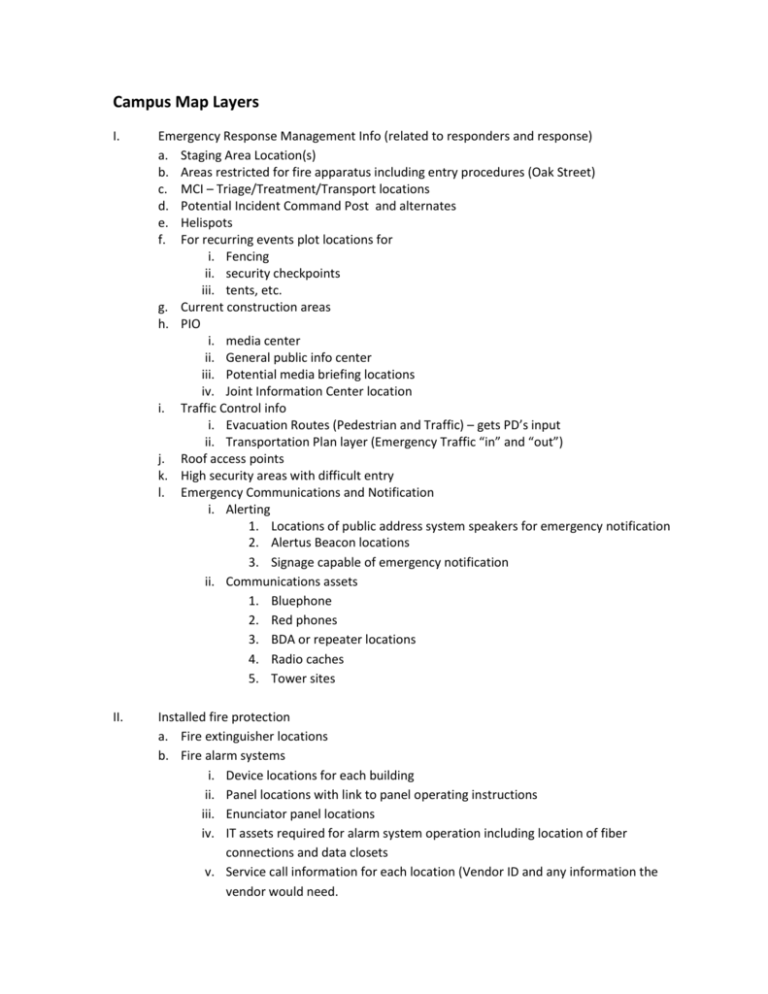
Campus Map Layers I. Emergency Response Management Info (related to responders and response) a. Staging Area Location(s) b. Areas restricted for fire apparatus including entry procedures (Oak Street) c. MCI – Triage/Treatment/Transport locations d. Potential Incident Command Post and alternates e. Helispots f. For recurring events plot locations for i. Fencing ii. security checkpoints iii. tents, etc. g. Current construction areas h. PIO i. media center ii. General public info center iii. Potential media briefing locations iv. Joint Information Center location i. Traffic Control info i. Evacuation Routes (Pedestrian and Traffic) – gets PD’s input ii. Transportation Plan layer (Emergency Traffic “in” and “out”) j. Roof access points k. High security areas with difficult entry l. Emergency Communications and Notification i. Alerting 1. Locations of public address system speakers for emergency notification 2. Alertus Beacon locations 3. Signage capable of emergency notification ii. Communications assets 1. Bluephone 2. Red phones 3. BDA or repeater locations 4. Radio caches 5. Tower sites II. Installed fire protection a. Fire extinguisher locations b. Fire alarm systems i. Device locations for each building ii. Panel locations with link to panel operating instructions iii. Enunciator panel locations iv. IT assets required for alarm system operation including location of fiber connections and data closets v. Service call information for each location (Vendor ID and any information the vendor would need. c. Life Safety i. AED locations ii. Area of Rescue Assistance locations d. Water Based Protection Systems i. Riser valve locations with 1. link to Manufacturer’s data sheet 2. Area served by each valve ii. Section valve locations with area served iii. Hydraulic data iv. Link to last inspection/test report v. PIV location with valve served vi. Fire Department Connections vii. Standpipes viii. Fire Hydrants with test data e. Fire Pumps with link to manufacturer’s information i. Location ii. Drive type iii. Area protected iv. Hydraulic information f. Special hazard systems i. Type ii. Coverage area III. Infrastructure a. Buildings i. Footprint ii. Floor plan iii. Sidewalks iv. Link to contact info for 1. Principle investigators 2. Building wardens 3. Any other key individuals b. Confined space locations layer with link to required entry procedures c. Utility tunnels with manhole and access locations d. Electric i. Line routes ii. Transformer locations iii. Building panels and distribution within buildings iv. Shut off locations v. Area served downstream from each shut off location or panel vi. Exterior lighting with 1. Coverage area e. f. g. h. i. j. k. l. m. 2. replacement information Water – domestic and irrigation i. Storage ii. Line routes iii. Shut off locations iv. Area served downstream from each shut off location or valve Water – chilled and steam i. Line routes ii. Shut off locations iii. Area served downstream from each shut off location Sewer – sanitary i. Routes ii. Clean outs iii. Single VS combined Sewer – storm/BMPs i. Storm drains with problematic areas marked ii. Access where people can enter the system, authorized or otherwise Natural gas i. Line routes ii. Shut off locations iii. Area served downstream from each shut off location Communications i. data/telecom spans, conx points and access features ii. Critical locations with RTOs iii. Telephone equipment locations Building HVAC i. Location / type ii. Air intakes iii. Exhaust locations Buildings on generator power i. Color coded to show 1. Full power 2. Partial power 3. Emergency lights only ii. Specifications 1. Size 2. Fuel supply 3. Run time from full tank 4. Capacity above required if any Transportation i. Streets ii. Sidewalks iii. iv. v. vi. vii. viii. Trails and paths ADA routes Bus routes with stops Truck routes Hazmat transportation routes Parking lots IV. Environmental & Culturally Sensitive a. Memorials b. Historic register locations c. Biological i. Unusual or protected specimen ii. registered trees iii. academic test plots iv. Gardens v. Nutrient Management Zones d. Art work (with link to value and insurance information) V. Security information (Related to security operations) a. Access points (Non-public) b. Duress alarm locations c. Doors capable of remote locking d. Camera locations with available view areas e. Knox Box Locations f. Traffic flow plans for recurring events VI. Hazardous materials layers a. Hazardous Materials storage location i. Hazardous materials ii. Hazardous waste iii. Universal waste iv. 180 accumulation areas v. Satellite collection areas vi. Links to individuals responsible for each area vii. Links to contingency plans for each b. Lab locations with links to chemical inventories c. Asbestos containing locations (links to known information) d. SPCC locations maps i. Tank/storage locations with capacities 1. FOG locations 2. Above ground storage tank locations 3. Transformers 4. Elevator pits 5. Underground storage tank locations ii. Spill control equipment with inventory iii. Drainage VII. Student/family/faculty/staff support layer a. Reunification Area(s) – Parents/Family/Others i. UTC Students ii. Challenger Center iii. Brown and Battle b. Sheltering facilities (internal and external) c. Building evacuation assembly points d. Shelter locations (tornado etc) VIII. External Issues a. Dam breach maps b. Flood plain maps c. Fire plain maps d. Local police, fire, and EMS locations e. Hospital and health care facilities f. Local tornado history g. Hazardous transportation features i. Railroads ii. Major highways iii. Hazmat routes iv. Pipelines v. Power lines h. Local Tier 3 reporting companies i. within X miles of campus OR ii. when the campus is within the worst case scenario effected area IX. Normal campus service locations with potential alternates a. Food service b. Student services i. Registration ii. Bursar iii. Student Health Services Academically sensitive locations a. Critical research b. Freezers X. XI. Business Continuity a. Critical facilities map with recovery time objectives (an RTO of less than 6 hours shows a red dot, 6-12 hours a yellow dot, etc) b. Location of acceptable alternative operating areas c. Map of home locations for i. Key administrators ii. EOC staff iii. Police, security, safety, and emergency management staff XII. Clery layers a. Clery Geography b. Location map for Clery Reportable Crimes XIII. Public and campus venues a. Capacity b. Link to Event Management system for each

